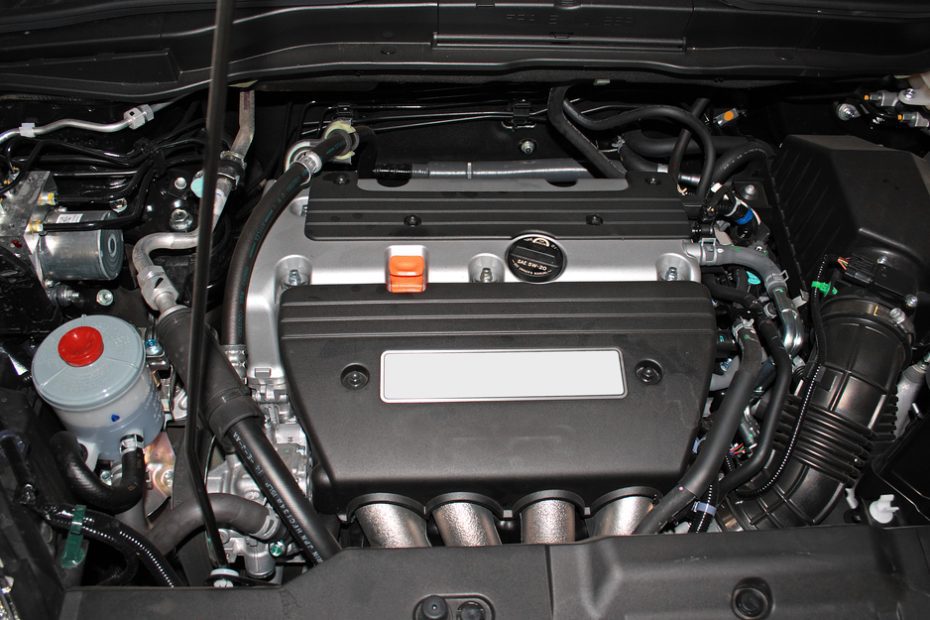What are the symptoms of a bad ECM fuse?
If you are experiencing issues with your vehicle’s electronic control module (ECM), one possible cause could be a faulty ECM fuse. The ECM is a crucial component of your vehicle’s electrical system, responsible for controlling and monitoring various engine functions. When the ECM fuse is bad, it can lead to a range of symptoms that can affect the performance and functionality of your vehicle.
Signs of a Bad ECM Fuse
Identifying the symptoms of a bad ECM fuse is important for diagnosing and resolving the issue promptly. Some common signs include:
- Engine Misfires: When the ECM fuse is faulty, it may disrupt the fuel injection process, resulting in engine misfires. You may notice a lack of power, rough idling, or hesitation during acceleration.
- Difficulty Starting: A problematic ECM fuse can make it difficult for your vehicle to start. The engine may crank but fail to start or take longer than usual to ignite.
- Intermittent Stalling: If the fuse is intermittently malfunctioning, your vehicle may stall unexpectedly while driving. This can be a dangerous situation, especially at high speeds or in heavy traffic.
- Electrical Issues: A bad ECM fuse can cause various electrical problems in your vehicle. These issues may include malfunctions in the dashboard gauges, intermittent power loss, or sporadic operation of the vehicle’s accessories.
- Check Engine Light: When the ECM fuse is faulty, it often triggers the check engine light on your dashboard. This warning light serves as an indication that there is a problem with the engine or its control systems.
Causes of a Bad ECM Fuse
Understanding the causes of a bad ECM fuse can help you prevent future issues. Some common reasons for a faulty ECM fuse include:
- Electrical Overload: If there is a sudden surge of electrical current, it can cause the ECM fuse to blow. This can happen due to a short circuit or excessive load on the system.
- Corrosion: Corrosion and oxidation can weaken the fuse terminals, leading to a poor connection and ultimately causing the fuse to fail.
- Aging or Wear: Over time, fuses can deteriorate due to regular use and exposure to heat. This can result in the fuse becoming weak and prone to failure.
Note: It’s important to address a bad ECM fuse as soon as possible to avoid further damage to your vehicle’s electrical system. If you’re unsure about how to proceed, it’s recommended to consult a professional mechanic.
Diagnosing and Resolving the Issue
If you suspect a bad ECM fuse, there are several steps you can take to diagnose and resolve the issue. These include:
- Inspecting the Fuse: Start by locating the ECM fuse in your vehicle’s fuse box. Carefully examine the fuse for signs of damage, such as a blown filament or melted plastic casing.
- Testing the Fuse: To ensure the fuse is indeed faulty, use a multimeter to measure the continuity across the fuse terminals. A good fuse should show continuity, while a bad one will not.
- Replacing the Fuse: If you confirm that the ECM fuse is bad, replace it with a new fuse of the same rating. Make sure to follow the proper procedures and precautions outlined in your vehicle’s manual.
- Checking for Underlying Issues: If the new fuse blows immediately or shortly after replacement, there may be an underlying issue causing the fuse to fail. In such cases, it’s advisable to seek professional assistance to diagnose and resolve the problem.
By promptly addressing a bad ECM fuse, you can ensure the proper functioning of your vehicle’s critical systems and prevent potential damage. Regular maintenance and inspections can also help identify any issues before they escalate, keeping your car running smoothly and reliably.
| Symptom | Description |
|---|---|
| Engine Misfires | Lack of power, rough idling, or hesitation during acceleration |
| Difficulty Starting | Cranking without ignition or prolonged starting time |
| Intermittent Stalling | Unexpected engine stall while driving |
| Electrical Issues | Dashboard gauge malfunctions, intermittent power loss, accessory problems |
| Check Engine Light | Activation of the engine warning light on the dashboard |
Will a bad ECM throw a code?
When it comes to diagnosing issues with your vehicle’s engine control module (ECM), commonly known as the “car’s brain,” many people wonder if a bad ECM will throw a code. The answer is, it depends.
Understanding the ECM
The ECM is responsible for monitoring and controlling various functions of your vehicle, such as fuel injection, ignition timing, and emissions control. It receives input from sensors throughout the vehicle and uses that information to make important decisions regarding engine performance.
When a problem arises within the ECM itself, it may not always trigger a specific diagnostic trouble code (DTC). This means that in some cases, a bad ECM may not throw a code, making it more challenging to pinpoint the issue.
Common Symptoms of a Bad ECM
While a bad ECM may not always generate a code, it can still exhibit certain symptoms that indicate a problem:
- Engine misfires or stalls unexpectedly
- Poor fuel economy
- Difficulty starting the engine
- Unresponsive or erratic throttle response
- Increased emissions
These symptoms may not be exclusive to ECM issues, so it’s essential to perform a thorough diagnosis before concluding that the ECM is at fault.
Diagnosing a Bad ECM
If you suspect a bad ECM, it’s best to consult a qualified mechanic or use specialized diagnostic equipment. They can perform tests to assess the functionality of the ECM and determine if it needs replacement.
“It’s important not to ignore potential ECM problems, as they can affect the overall performance and reliability of your vehicle,” says John, a certified mechanic.
What are the symptoms of a faulty ECM?
Introduction
The Engine Control Module (ECM) is a critical component in modern vehicles that controls various functions of the engine. When the ECM malfunctions, it can lead to a range of problems affecting the performance and drivability of the vehicle. In this article, we will explore the symptoms that may indicate a faulty ECM.
1. Check Engine Light
One of the primary indications of a faulty ECM is the illumination of the check engine light on the dashboard. This warning light is designed to alert drivers to potential issues with the engine or its control systems.
2. Engine Performance Issues
A faulty ECM can cause a variety of engine performance issues. These may include rough idling, stalling, hesitation, or a significant decrease in power. The ECM controls the fuel injection, ignition timing, and other crucial parameters, so any malfunction can impact these functions.
3. Poor Fuel Efficiency
If you notice a sudden drop in fuel efficiency without any obvious reason, a faulty ECM could be to blame. Since the ECM regulates fuel injection and other fuel-related processes, a malfunction can result in an inefficient fuel-air mixture, leading to increased fuel consumption.
4. Non-Functioning Gauges
A faulty ECM may also cause certain gauges on the instrument cluster to stop functioning properly. This can include the speedometer, tachometer, or temperature gauge. Erratic readings or complete failure of these gauges can indicate an ECM issue.
5. Transmission Problems
In some cases, a faulty ECM may affect the vehicle’s transmission. Symptoms can include erratic shifting, delays in gear engagement, or the transmission refusing to shift altogether. Proper communication between the ECM and the transmission control module is crucial for smooth gear transitions.
6. Electrical Issues
Since the ECM is responsible for controlling various electrical components in the vehicle, a malfunctioning ECM can lead to electrical problems. This may manifest as intermittent or constant issues with lights, power windows, door locks, or the audio system.
7. Overheating
A faulty ECM might cause the engine to overheat due to incorrect control of the cooling system. If you notice the temperature gauge indicating higher-than-normal readings, it is essential to have the ECM checked along with the cooling system.
8. Faulty Sensor Readings
The ECM relies on input from various sensors to make decisions and adjustments. A faulty ECM can result in inaccurate readings from these sensors, leading to misdiagnosis of other engine issues or improper adjustments, potentially causing further damage.
9. Difficulties with Starting the Engine
If you experience difficulties starting your vehicle, such as prolonged cranking or the engine not starting at all, a faulty ECM could be the culprit. The ECM plays a crucial role in initiating and controlling the starting process, so any malfunction can interfere with this operation.
10. “Limp Mode” Activation
“Limp mode” is a protective feature that the ECM activates when it detects a severe issue to prevent further damage. When a fault is detected, the ECM limits the vehicle’s performance to a minimum level necessary for safe operation. This can include reduced power, limited speed, and other restrictions.
In conclusion, a faulty ECM can lead to a range of symptoms, including check engine light illumination, engine performance issues, poor fuel efficiency, non-functioning gauges, transmission problems, electrical issues, overheating, faulty sensor readings, difficulties starting the engine, and activation of “limp mode”. If you experience any of these symptoms, it is advisable to have your vehicle inspected by a qualified mechanic to diagnose and address the ECM issue.
Conclusion
A bad ECM may or may not throw a code, but it can still exhibit noticeable symptoms. If you experience any issues with your vehicle’s performance, it’s always best to have it checked by a professional. Don’t overlook the importance of the ECM, as it plays a crucial role in keeping your vehicle running smoothly.



